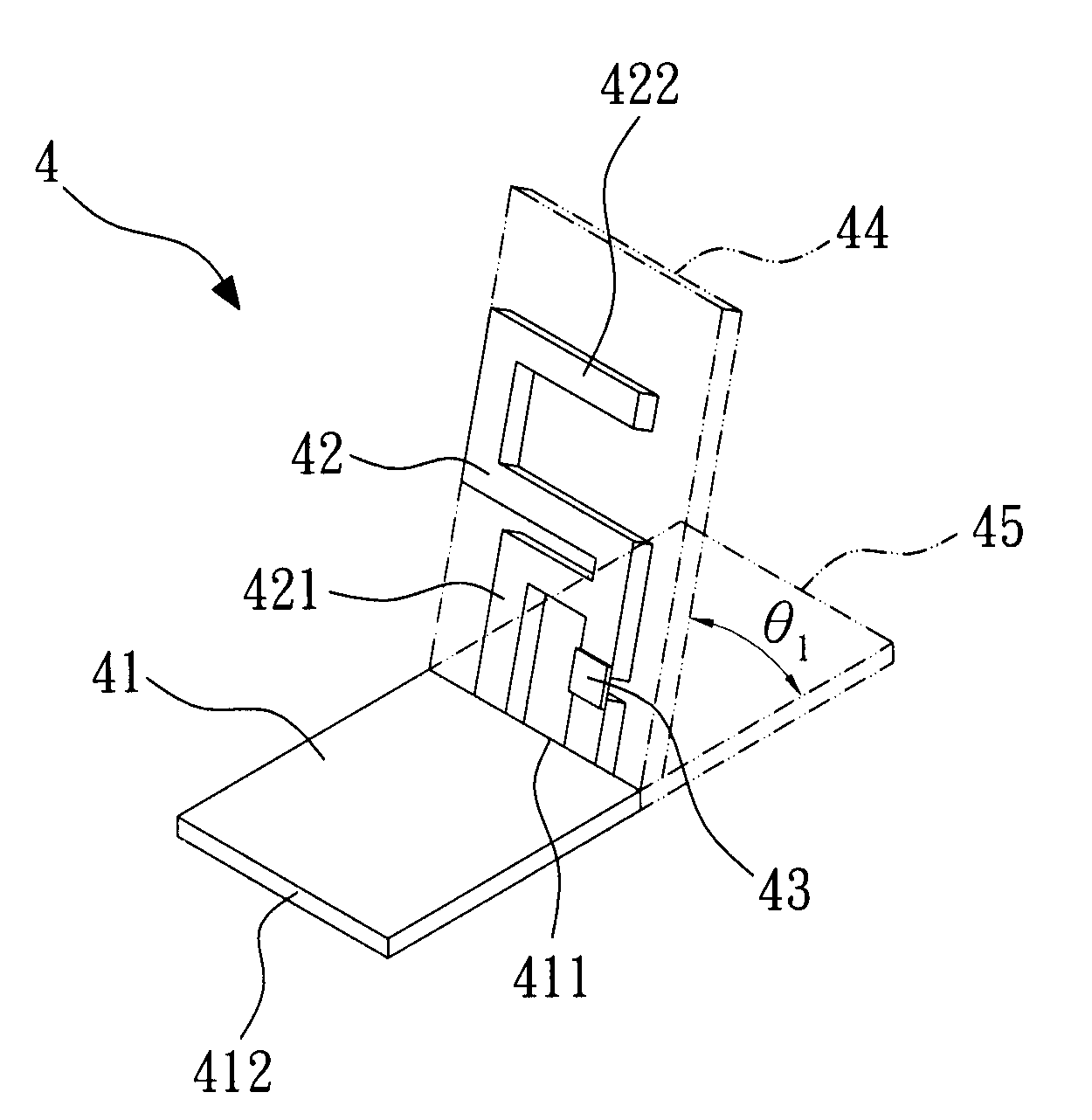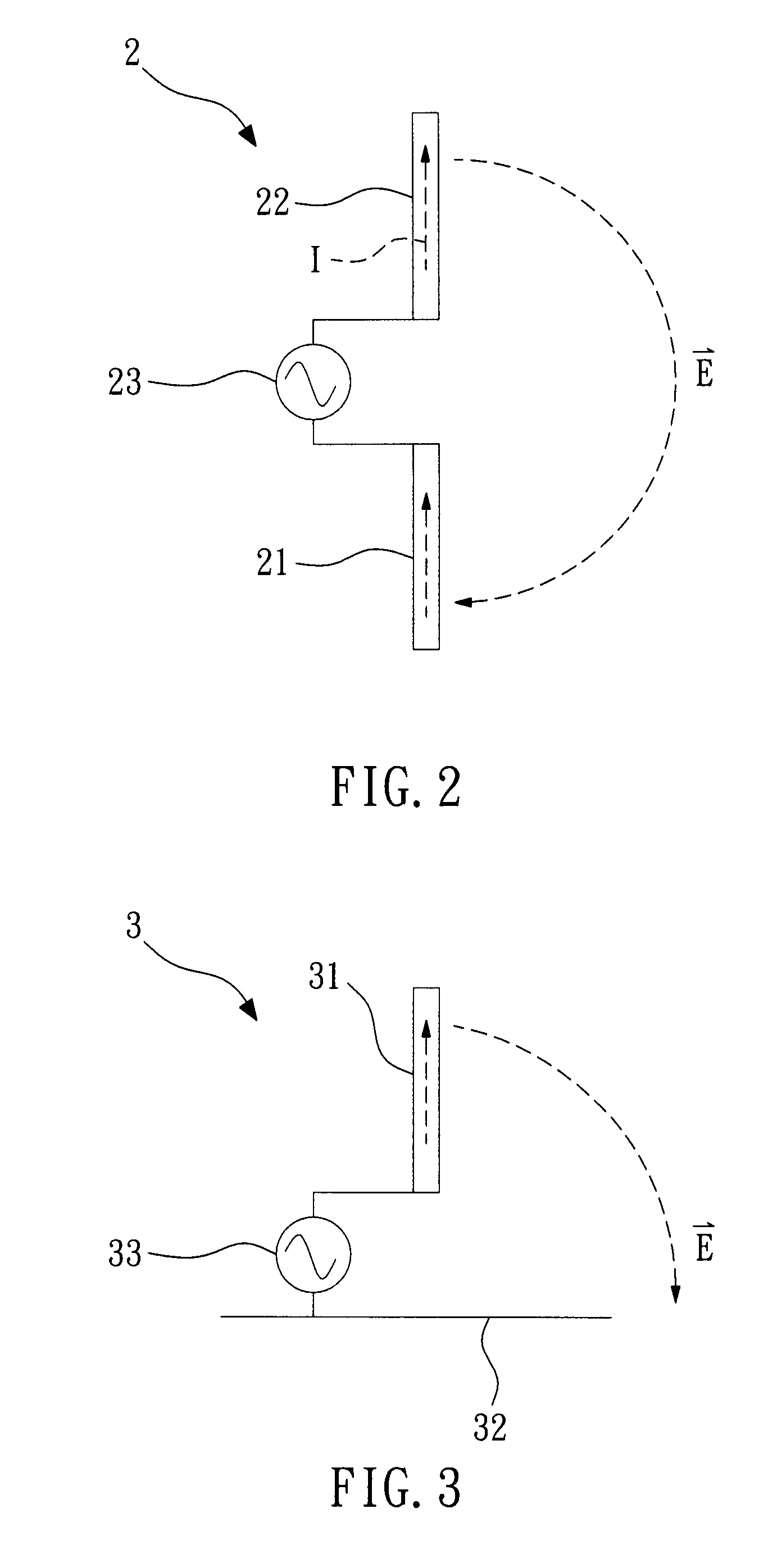RFID tag using monopole antenna
a radio frequency identification and monopole technology, applied in the field of identification tags, can solve the problems of poor readable distance of the conventional rfid tag b>1/b>, rather high production cost, and substantial thickness of the entire tag, so as to achieve easy manufacturing, reduce production cost, and increase the readable distance
- Summary
- Abstract
- Description
- Claims
- Application Information
AI Technical Summary
Benefits of technology
Problems solved by technology
Method used
Image
Examples
Embodiment Construction
[0020]FIG. 2 is a schematic diagram of a dipole antenna. The dipole antenna 2 has two support arms 21, 22 that are each connected to a power supply 23, and a current I flows through the support arms 21, 22 to form an electric field {right arrow over (E)}, so as to produce electromagnetic wave radiation.
[0021]FIG. 3 is a schematic diagram of a monopole antenna. In order to reduce the volume of the antenna and to construct the antenna conveniently, one of the support arms of the dipole antenna is replaced with a metal plate, so that the dipole antenna is simplified into a monopole antenna 3. The monopole antenna 3 has a support arm 31 and a metal plate 32, in which the support arm 31 is perpendicular to the metal plate 32. The support arm 31 and the metal plate 32 are each connected to a power supply 33, and a current I flows through the support arm 31 to form an electric field {right arrow over (E)}, thereby producing electromagnetic wave radiation.
[0022]The length of the monopole an...
PUM
 Login to View More
Login to View More Abstract
Description
Claims
Application Information
 Login to View More
Login to View More - R&D
- Intellectual Property
- Life Sciences
- Materials
- Tech Scout
- Unparalleled Data Quality
- Higher Quality Content
- 60% Fewer Hallucinations
Browse by: Latest US Patents, China's latest patents, Technical Efficacy Thesaurus, Application Domain, Technology Topic, Popular Technical Reports.
© 2025 PatSnap. All rights reserved.Legal|Privacy policy|Modern Slavery Act Transparency Statement|Sitemap|About US| Contact US: help@patsnap.com



